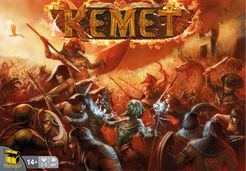There is a category of boardgames which we rarely play and
which sit unloved on the shelves. These are Strategic, Combative, Area Control
games. On my shelf I have a range of games that stretch back in time and
include titles like Kingmaker, History of the World, Shogun, plus more modern
games like Game of Thrones and Merchants & Marauders. There are many common
reasons why such games are not played; the combative style, player elimination
(or player diminution), a force build up focus which results in a lack of
action, too many rules, player down-time etc. I think the dominant reason is
the time commitment; these games take 3-4 hours minimum, and some, like
Twilight Imperium, can easily double this! For some gamers the reasons listed
are not a problem and they like the depth of the games, and enjoy expending the
time and thought required to play a ‘good’ game. Personally I suspect I am such
a gamer, which presumably explains why I continue to buy these games, even when
I cannot get them on the table.

Therefore I have purchased yet another game of this ilk,
Kemet, and I have hopes that it can overcome the barriers listed and see the
light of day (occasionally). From reviews read, I have high expectations of
success. The game is reported to play fast (roughly 1 hour), with combative
action from the start, no player elimination, little down-time, plus lots of
theme. So this Sunday we tried a 4 player game of Kemet. As I went through the
rules I did see some glazing of eyes, which was a concern but may simply
reflect my poor communication, but once we got playing it was clear that all
players had picked up the gist of what they could/needed to do. From the start
I adopted a highly aggressive approach because I wanted to emphasise the need
to attack in the game, and I did not want the others to get in to a cautious mindset.
With hindsight, I can see I was too aggressive because the other players
snaffled all the nice upgrades and cool monsters, before making their moves.
Soon everyone was attacking whenever there was an opportunity and after an hour
or so, Chris emerged as the winner. Elaine and Val were close behind, whilst I
trialled in last place. I was glad to hear that everyone enjoyed the game and
would be willing to play again in the future! Elaine is slightly doubtful
because she does not find any combative game to her taste. The components of Kemet
are great; the board is colourful, I like the fact that each players units are
different models, the monsters look great, the power tiles clear and the
iconography self explanatory, the combat cards work well and the outcomes easy
to resolve. The speed of play and constant action keep all players involved, in
fact I would have personally liked the game to last a bit longer. To conclude,
I am very happy with Kemet and although it is unlikely to be a ‘go-to’ game, I
can see it making future appearances on the table. Unfortunately, I don’t think
it will encourage our group to breakout the other games discussed earlier, so
Shogun et al. will continue to
sit in their boxes.

After Kemet, we tried the card game ‘Oh, My Goods’. Elaine
and I had played the previous night and both enjoyed the mechanisms and combo
possibilities the different cards present. The game worked equally well with 4
players, and Val won the first game (much to her surprise) and Chris the second
game. In my limited experience the final scores are always tight, with only one
or two points separating players, irrespective of how many buildings they have
completed. There are many routes to success; getting an assistant is nice,
building potential chains of production is good if you can make them work,
simply producing goods can generate significant points. I’m sure our game play
will improve with experience and as our knowledge of the cards grows. I like
the speed of play and the good player scaling, it plays equally well with 2
through to 4 players. I can see this game being taken on holiday to act as a
filler game in those quiet, downtime moments. I think there is a small expansion
available and it is something I will investigate getting.




